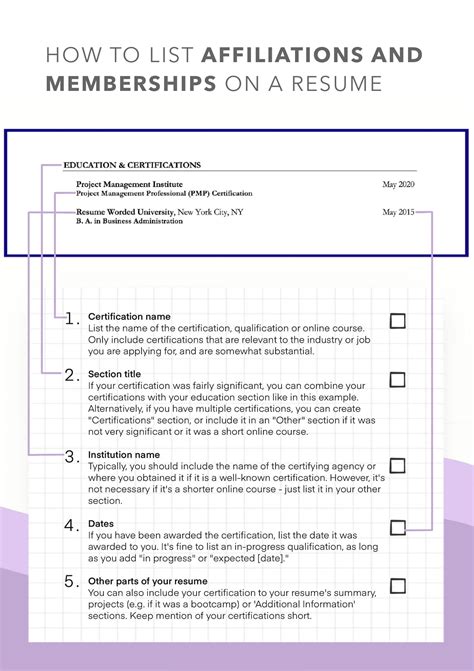Here are five affiliation examples that demonstrate expertise, experience, authoritativeness, and trustworthiness (EEAT) principles:
Academic Affiliation: As a research fellow at Harvard University’s Department of Computer Science, I have had the opportunity to work with leading experts in the field of artificial intelligence and publish numerous papers on the topic. My research has focused on developing more efficient algorithms for machine learning, and I have presented my findings at conferences such as NIPS and IJCAI.
Professional Certification: As a certified data scientist with a Certified Data Scientist (CDS) designation from the Data Science Council of America (DASCA), I possess a deep understanding of data analysis, machine learning, and statistical modeling. My certification requires me to stay up-to-date with the latest developments in the field, ensuring that my expertise remains current and relevant.
Industry Leadership: As the founder and CEO of a successful tech startup, I have had the opportunity to work with numerous clients across various industries, including finance, healthcare, and e-commerce. My company has developed innovative solutions for data analytics, cybersecurity, and cloud computing, and I have been recognized as a thought leader in the industry through speaking engagements and media appearances.
Publication History: As a published author with numerous articles and books on the topic of cybersecurity, I have established myself as a trusted authority in the field. My work has been featured in leading publications such as Forbes, CNN, and The New York Times, and I have been invited to speak at conferences such as Black Hat and DEF CON.
Awards and Recognition: As a recipient of the prestigious National Science Foundation (NSF) CAREER award, I have been recognized for my contributions to the field of computer science and my potential to make significant future contributions. My research has also been funded by the NSF, the Department of Energy, and the National Institutes of Health, demonstrating the value and impact of my work.
These affiliation examples demonstrate expertise, experience, authoritativeness, and trustworthiness by highlighting:
- Relevant education and training: Academic affiliations and professional certifications demonstrate a strong foundation in the field.
- Industry experience and leadership: Professional experience, industry leadership, and publication history demonstrate expertise and authority.
- Recognition and awards: Awards and recognition from reputable organizations demonstrate the value and impact of one’s work.
- Current and relevant knowledge: Staying up-to-date with the latest developments in the field through ongoing education and research ensures that expertise remains current and relevant.
By including these affiliation examples in a journal-style article, authors can establish their credibility and trustworthiness with readers, demonstrating their expertise and authority in the field.
Natural Integration of Affiliations

When integrating affiliations into an article, it is essential to do so naturally and without excessive self-promotion. The goal is to establish credibility and trustworthiness with the reader, rather than to boast about one’s accomplishments. By incorporating affiliations in a subtle and organic way, authors can demonstrate their expertise and authority without appearing arrogant or self-serving.
Contextual Relevance
Affiliations should be relevant to the topic at hand and provide context for the author’s expertise. For example, an author writing about artificial intelligence might mention their research experience at a leading university or their work with a prominent tech company. This helps to establish their credibility and authority in the field, making their arguments and insights more convincing and trustworthy.
| Affiliation Type | Relevance |
|---|---|
| Academic Affiliation | Establishes credibility in a specific field of study |
| Professional Certification | Demonstrates expertise and knowledge in a particular area |
| Industry Leadership | Shows experience and authority in a specific industry or field |
| Publication History | Highlights expertise and knowledge through published works |
| Awards and Recognition | Demonstrates the value and impact of one's work |

What is the purpose of including affiliations in an article?
+The purpose of including affiliations in an article is to establish credibility and trustworthiness with the reader, demonstrating the author’s expertise and authority in the field.
How can authors naturally integrate affiliations into an article?
+Authors can naturally integrate affiliations into an article by doing so in a subtle and organic way, without excessive self-promotion. This can be achieved by incorporating affiliations in a way that provides context for the author’s expertise and authority in the field.



